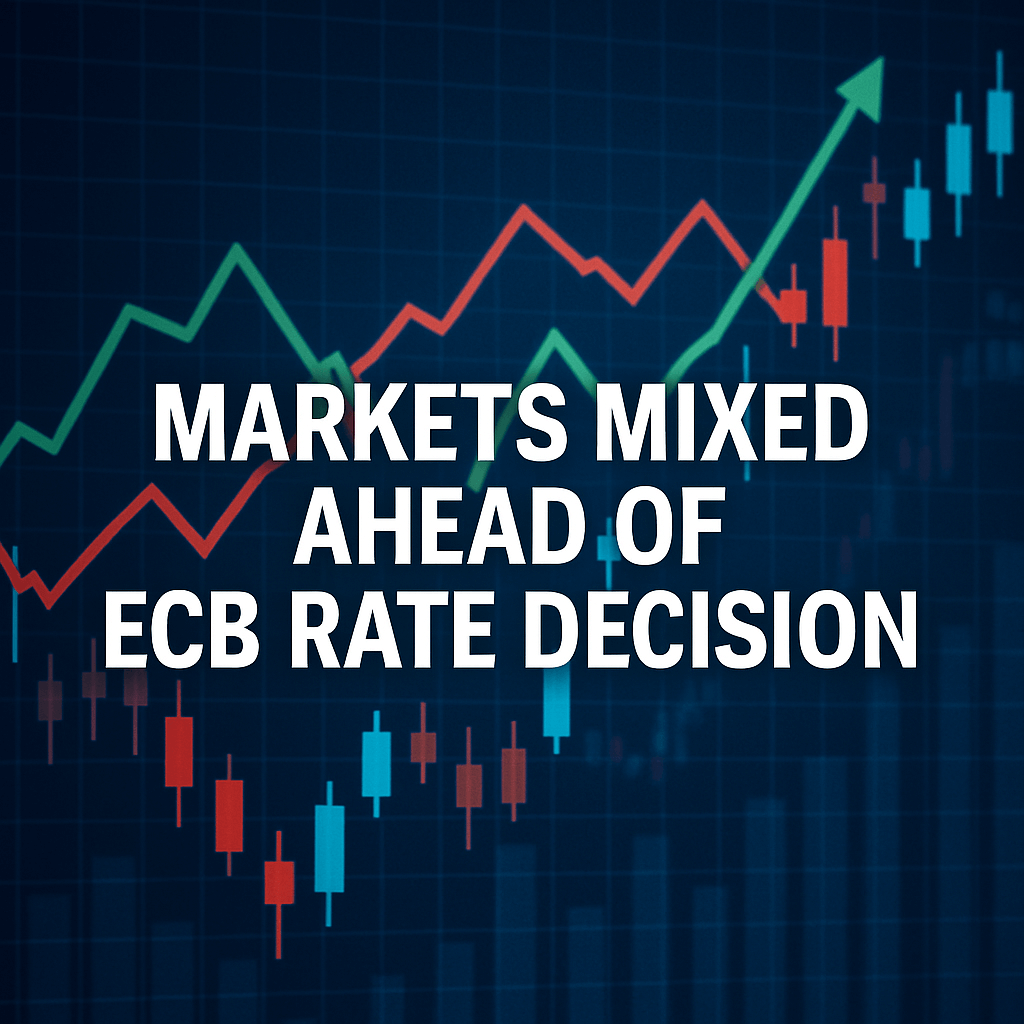Markets Mixed Ahead of ECB Rate Decision

The European Commission released its Spring Package on Wednesday, detailing an economic update that is integral to its five-year plan aimed at enhancing the resilience of the European Union (EU). This package not only provides a framework for economic stability but also includes tailored recommendations for individual member states, considering their specific economic climates.
Fiscal Responsibility and Defence Capabilities
While the Commission emphasized the critical importance of fiscal responsibility, the ongoing geopolitical tensions necessitate a renewed focus on defence readiness. This shift is largely influenced by Russia’s military actions in Ukraine and increasing pressures from the United States for Europe to bolster its defence commitments. Former President Donald Trump’s consistent calls for increased financial contributions underscore the urgency for EU member states to take decisive action in securing their own safety.
“Amid rising security challenges, the national escape clause (NEC) under the Stability and Growth Pact is also drawn upon for the first time,” stated the Commission.
National Escape Clause and Member State Actions
The NEC allows EU countries to temporarily exceed the established growth rates for public expenditure, enabling them to enhance their defence budgets significantly. To date, 16 member states have called upon the Commission to activate this mechanism, which reflects a robust consensus on the necessity to elevate defence financing amidst escalating security threats. The countries requesting this include:
- Belgium
- Bulgaria
- Croatia
- Czechia
- Denmark
- Estonia
- Finland
- Germany
- Greece
- Hungary
- Latvia
- Lithuania
- Poland
- Portugal
- Slovakia
- Slovenia
Targeted Recommendations for Economic Growth
The Spring Package also included specific recommendations aimed at boosting the competitiveness of EU member states. The Commission urged nations to close existing innovation gaps, accelerate the transition towards decarbonisation aligned with the Clean Industrial Deal, mitigate excessive dependencies on external supply chains, and strengthen resilience against current and future disruptions.
Additionally, the emphasis was placed on developing defence capabilities while promoting skilled employment opportunities and ensuring social equity. These holistic recommendations are designed to elevate the economic standing of member nations and secure the stability of the EU economy as a whole.
Compliance Assessments and Challenges Ahead
The Commission’s report identified that out of the 27 member states, 12 were deemed compliant with their medium-term spending plans. However, concerns were raised regarding Cyprus, Ireland, Luxembourg, and the Netherlands, which were identified as potentially overshooting their fiscal limits. Conversely, Portugal and Spain were noted for achieving broad compliance, showcasing a variance in economic management across the EU.
A notable case was Austria, which is on the cusp of a formal procedure due to its fiscal deficit, illustrating that even established economies face challenges in maintaining budgetary discipline. Romania, in particular, was highlighted for its significantly elevated net expenditure growth, which could hinder its efforts to rectify its excessive deficit by the target year of 2030.
Implications for the Upcoming ECB Rate Decision
As financial markets remain mixed, all eyes are on the European Central Bank (ECB) and its forthcoming interest rate decision. Investors are particularly focused on how the ECB will respond to the evolving economic landscape following the Spring Package. The potential for adjustments to monetary policy reflects broader market sensitivities to inflationary pressures and economic uncertainty.
The ECB’s stance on interest rates will be crucial in shaping the investment climate across the Eurozone, particularly as inflation persists at elevated levels and economic growth prospects remain cautious. A proactive approach from the ECB could bolster market confidence, but any tightening of monetary policy may also elicit responses from investors concerned about stifling growth.
Conclusion: Navigating Uncertainty in European Economies
In summary, the mixed market reaction underscores the complex interplay between fiscal policy, defence spending, and monetary policy within the EU. As member states navigate these intricate challenges, the outcomes of the ECB’s decision-making process will undoubtedly play a pivotal role in determining the economic trajectory of the Eurozone.